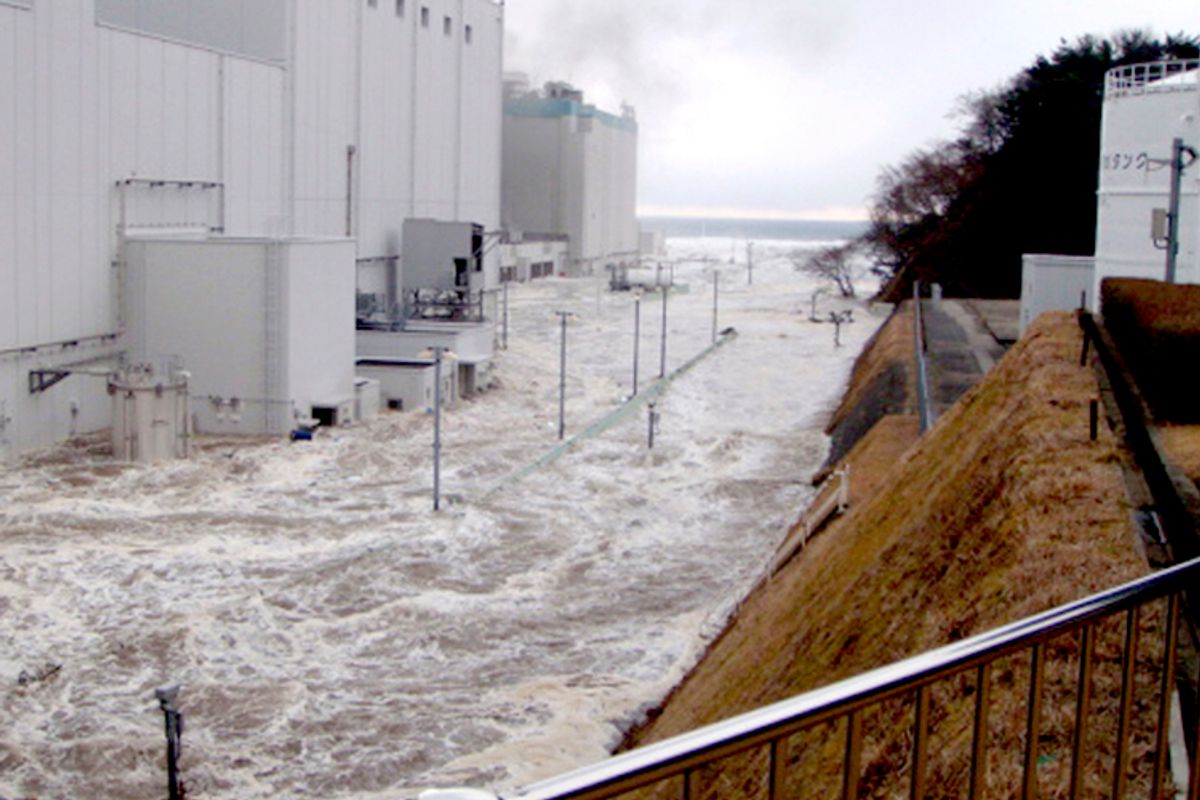Three and a half years after it was first released, and right on schedule, traces of radiation from the 2011 Fukushima nuclear disaster have just about made their way to the West Coast of the U.S.
The small amount of radioactive cesium-134 was detected about 100 miles off the coast of northern California by Ken Buesseler, a marine scientists at the Woods Hole Oceanographic Institute who, in the absence of any radiation monitoring on the part of the U.S. government, has been crowd-funding an independent effort to keep tabs on the Pacific.

White circles indicate that no cesium-134 was detected. Blue circles indicate locations were low levels of cesium-134 were detected. No cesium-134 has yet been detected along the coast, but low levels have been detected offshore. (Woods Hole Oceanographic Institution)
There's absolutely no need to panic.
The plume's been diluted in the course of its journey, the institute said in a statement: The highest levels of radioactivity detected near the Fukushima plant in the disaster's immediate aftermath were some 10 million times higher than what's been detected near the U.S., which, Buesseler explains, "are only detectable by sophisticated equipment able to discern minute quantities of radioactivity." The team measured 2 Becquerels per cubic meter of cesium-134, which doesn't occur naturally in the oceans. It's an amount, they said, that is "far below where one might expect any measurable risk to human health or marine life, according to international health agencies" and more than 1,000 times lower than the EPA standards for drinking water.
Buesseler underscored all that yesterday in a Reddit AMA, explaining that people swimming in the Pacific Ocean six hours a day, every day, would be exposed to an amount of radiation more than 1,000 times less than what's in a dental X-ray. And unlike mercury, he added, cesium doesn't become more concentrated as it moves up the food chain, so "a fish swimming from contaminated waters near Japan loses cesium quickly."
"There is a lot of misinformation out there," Buesseler said. "I see no reason to exaggerate what is happening, and every reason to closely monitor what is going on with proper scientific sampling ... Yes, radioactivity can be dangerous but not at the levels we are measuring now off the West Coast."
Back in Japan, March 11, 2011, is an infamous date, one from which many are still struggling to recover from the impacts of the earthquake, tsunami and nuclear meltdown. Last week, the Japanese government officially approved the reopening of two nuclear reactors under strict new safety requirements.



Shares